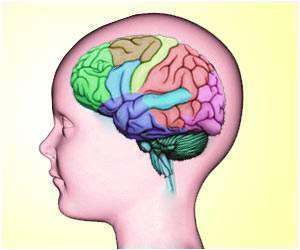Cardiopulmonary abnormalities were associated with predictable patient and seizure characteristics in in children with epilepsy, researchers reported here.
Seizure-related apnea was associated with younger age, symptomatic-generalized seizure (versus primary-generalized seizure), seizure duration, anti-epileptic drug use, and seizure-related bradycardia, according to Kanwaljit Singh, MD, of Boston Children's Hospital, and colleagues.
Seizure-related tachypnea was associated with age, right-sided seizure, and was inversely related to anti-epileptic drug use, Singh said in a poster presentation during the Associated Professional Sleep Societies meeting.
Prior research has not extensively explored cardiopulmonary abnormalities that may result in sudden unexpected death in epilepsy (SUDEP) in pediatric epileptic seizures, the authors noted.
They recorded cardiopulmonary changes in 26 pediatric patients during 101 epileptic seizures through pulse oximetry, EKG, and respiratory inductance to provide associations between those changes with seizure and patient characteristics.
The researchers found significant associations between patient and seizure characteristics with seizure-related apnea, bradycardia, bradypnea, tachypnea, bradycardia, post-seizure bradycardia, and tachycardia.
Seizure-related apnea was significantly associated with:
- Younger age (P=0.01)
- Occurrence in the temporal lobe (P=0.0005)
- Left-sided seizure (P=0.003)
- Symptomatic-generalized seizure versus primary-generalized seizure (P=0.01)
- Longer seizure duration (P=0.0002)
- Desaturation (P<0.0001)
- Seizure-related bradycardia (P=0.02)
- Greater use of anti-epileptic drugs (P=0.006)
Apnea approached significance in male patients (P=0.08), in a comparison of symptomatic-generalized versus complex-partial seizures (P=0.08), and in complex-partial versus primary generalized seizures (P=0.08). There was a decreased prevalence of apnea in patients who had frontal lobe seizures (P=0.004).
Seizure-related bradypnea was significantly elevated in those whose seizures were left-sided (P=0.04) and symptomatic-generalized versus complex-partial and primary-generalized seizures (P=0.005 for both). This association showed a trend in those whose seizures occurred in the temporal lobe (P=0.07), whose seizures were lesional (P=0.09), in those with desaturation (P=0.07), and among those who received more anti-epileptic drugs (P=0.07).
Similarly, decreased prevalence trended among those with frontal lobe seizures (P=0.07).
Ictal-tachypnea was significantly associated with older age (P=0.01), frontal lobe versus nontemporal lobe foci (P=0.02), right-sided seizure (P=0.0008), and use of fewer anti-epileptic drugs (P=0.005). There also was a trend toward ictal-tachypnea with female gender (P=0.05) and frontal lobe seizure versus temporal lobe seizure (P=0.09).
Bradycardia in pediatric patients with epileptic seizures was significantly tied to male gender (P=0.03), longer seizure duration (P=0.03), desaturation (P=0.001), and use of more anti-epileptic drugs (P=0.04). There was also a trend with younger age (P=0.09) and a decreased association in those with frontal-lobe seizures (P=0.01).
Tachycardia in the population elevated among female patients (P=0.001) and trended among older patients (P=0.08) and those with frontal lobe seizures (P=0.06). There was a significantly decreased association in those who had lesional seizures (P=0.01) and who received more anti-epileptic drugs (P=0.01).
The authors also found that desaturation increased with longer seizures (P<0.0001), in those with seizure-related apnea (P<0.0001), in those with seizure-related bradycardia (P=0.001), and in those who received more anti-epileptic drugs (P=0.001).
Singh concluded that understanding the patient and seizure characteristics associated with pediatric seizures may allow for future prevention strategies in patients at risk for SUDEP and may help identify the underlying mechanisms of the condition.
Read more here

No comments:
Post a Comment